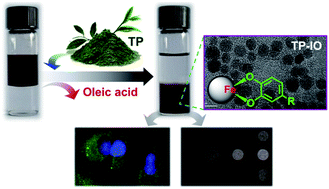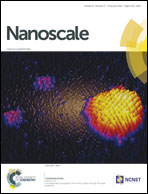“Green” functionalization of magnetic nanoparticles via tea polyphenol for magnetic resonance/fluorescent dual-imaging†
Abstract
Tea polyphenol serves as an environmentally friendly ligand-exchange molecule to synthesize multifunctional metal-doped superparamagnetic iron oxide nanoparticles via a catechol–metal coordination interaction. The resultant particles not only exhibit excellent hydrophilicity and protein adsorption resistance, but also are applicable as magnetic resonance/fluorescent dual-imaging probes due to their high T2 relaxivity, autofluorescence and large cellular uptake.


 Please wait while we load your content...
Please wait while we load your content...